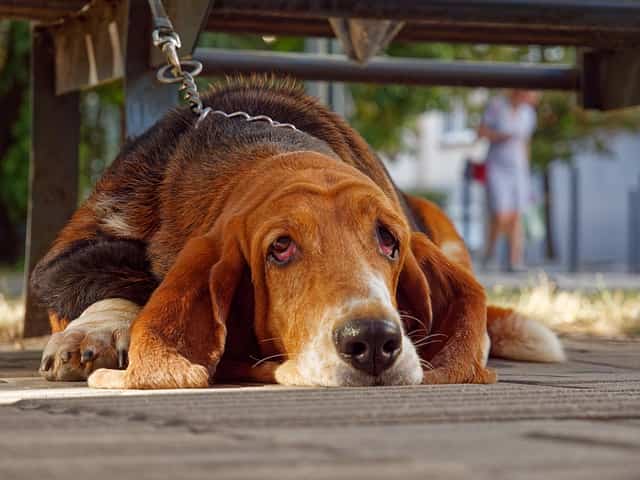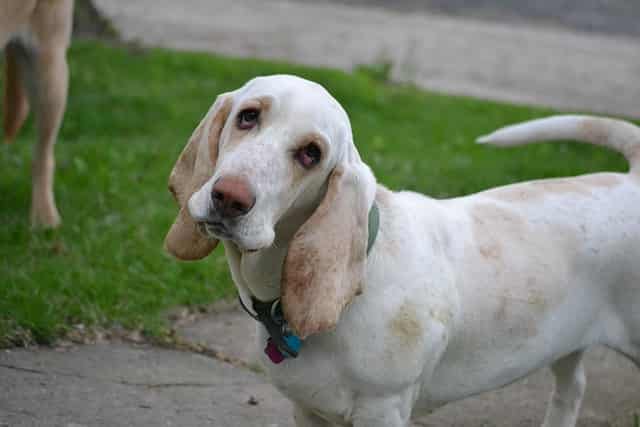
Image by Igor Cokrlic from Pixabay
Dogs are one of the most beloved pets, and their behavior is a subject of fascination for many pet owners. One of the most curious aspects of their behavior is their ear flapping. Dogs often flap their ears in response to various stimuli, but why do they do it?
There are several reasons why dogs flap their ears. One of the most common reasons is to regulate their body temperature. Dogs do not sweat like humans, so they rely on other mechanisms to cool down. Flapping their ears helps to circulate air and cool down their body temperature. Additionally, dogs may flap their ears when they are excited or nervous. This behavior is often seen in puppies who are still learning how to regulate their emotions.
Another reason why dogs flap their ears is to communicate with other dogs. Dogs use their ears to convey their emotions and intentions. For example, a dog may raise its ears and tilt its head forward when it is interested or curious about something. On the other hand, a dog may flatten its ears against its head when it is scared or submissive. Understanding these ear movements can help pet owners better communicate with their furry friends.
Anatomy of a Dog’s Ear
Dogs have a unique and complex ear structure that allows them to hear sounds that humans cannot. Understanding the anatomy of a dog’s ear can help explain why they flap their ears and how they hear the world around them.
Outer Ear
The outer ear of a dog is made up of two parts: the pinna and the ear canal. The pinna is the visible part of the ear that is covered in fur and cartilage. It helps to collect sound waves and funnel them into the ear canal. The ear canal is a tube-like structure that leads to the eardrum. It is lined with hair and wax-producing glands that help protect the ear from debris and infection.
Middle Ear
The middle ear of a dog is a small, air-filled chamber located behind the eardrum. It contains three tiny bones called the ossicles that vibrate in response to sound waves. These vibrations are then transmitted to the inner ear. The middle ear also contains the Eustachian tube, which helps to equalize pressure between the middle ear and the environment.
Inner Ear
The inner ear of a dog is where sound waves are converted into electrical signals that are sent to the brain. It is made up of the cochlea, which is a spiral-shaped structure that contains tiny hair cells. These hair cells are responsible for converting sound waves into electrical signals. The inner ear also contains the vestibular system, which helps a dog maintain balance and orientation.
Overall, the complex ear structure of a dog allows them to hear a wide range of sounds and locate the source of a sound with great accuracy. Flapping their ears may be a way to help funnel sound waves into their ear canal, or it may simply be a way to cool down on a hot day.
Ear Flapping Behavior

Why Dogs Flap Their Ears
Ear flapping can be a sign of discomfort, irritation, or even excitement. When dogs flap their ears, it can be a way to cool themselves down by increasing airflow to the ear canal. Additionally, dogs with long ears may flap them to shake off dirt or debris.
Ear flapping behavior can occur at any time, but it may be more prevalent during certain activities. For example, dogs may flap their ears during play or exercise when they are excited. They may also flap their ears when they are feeling anxious or uncomfortable. In some cases, ear flapping can be a sign of an ear infection or other medical condition.
How Dogs Flap Their Ears
The way a dog flaps its ears can vary depending on the breed and the individual dog. Some dogs may flap their ears vigorously, while others may only make small movements. Dogs with long, floppy ears may have to shake their head more to get the same effect as a dog with upright ears. In some cases, dogs may even use their paws to help hold their ears in place while they flap them. Overall, ear flapping behavior is a normal part of a dog’s communication and body language. However, if you notice your dog is frequently flapping their ears or seems to be in discomfort, it may be worth consulting with a veterinarian to rule out any underlying medical issues.
Common Reasons for Ear Flapping

Image by jawestad from Pixabay
Here are some of the most common reasons why dogs flap their ears:
Ear Infections
Ear infections are a common cause of ear flapping in dogs. They can be caused by bacteria, yeast, or other microorganisms that grow in the ear canal. Dogs with ear infections may also shake their heads, scratch their ears, and have a strong odor coming from their ears. Treatment for ear infections typically involves cleaning the ears and administering medication prescribed by a veterinarian.
Allergies
Allergies can cause dogs to flap their ears. Dogs can be allergic to a variety of things, including food, pollen, dust, and mold. In addition to ear flapping, dogs with allergies may also have itchy skin, sneeze, and have watery eyes. Treatment for allergies may involve avoiding the allergen, medication, or immunotherapy.
Parasites
Parasites such as ear mites can cause ear flapping in dogs. Ear mites are tiny insects that live in the ear canal and feed on ear wax and skin debris. In addition to ear flapping, dogs with ear mites may also scratch their ears and have a dark, waxy discharge from their ears. Treatment for ear mites typically involves cleaning the ears and administering medication prescribed by a veterinarian.
Foreign Objects
Foreign objects such as grass seeds or foxtails can get lodged in a dog’s ear canal and cause ear flapping. Dogs with foreign objects in their ears may also shake their heads and scratch at their ears. Treatment for foreign objects in the ear typically involves removing the object under sedation by a veterinarian.
Behavioral Reasons
Dogs may also flap their ears for behavioral reasons. Some dogs flap their ears when they are excited, happy, or nervous. This type of ear flapping is usually not a cause for concern and does not require treatment.
When to See a Veterinarian
Signs of Ear Problems
While ear flapping is a normal behavior for dogs, excessive ear flapping or scratching can be a sign of ear problems. Other signs of ear problems in dogs include:
- Redness or swelling of the ear canal
- Discharge or foul odor from the ears
- Head shaking or tilting
- Pain or sensitivity when the ears are touched
- Hearing loss or difficulty
If you notice any of these signs, it is important to schedule an appointment with a veterinarian as soon as possible.
Treatment Options
The treatment for ear problems in dogs will depend on the underlying cause. Some common treatment options include:
| Treatment | Description |
|---|---|
| Medication | Antibiotics or antifungal medication may be prescribed to treat infections. Corticosteroids may be used to reduce inflammation. |
| Cleaning | The ears may need to be cleaned to remove debris or excess wax. Your veterinarian can recommend a safe and effective cleaning solution. |
| Surgery | In severe cases, surgery may be necessary to remove tumors or correct structural abnormalities. |
It is important to follow your veterinarian’s instructions for treatment and follow-up care to ensure the best possible outcome for your dog.
Conclusion

Image by csolingsmith from Pixabay
After conducting research and analyzing various factors that contribute to ear flapping in dogs, it can be concluded that there is no single definitive answer to this question. In some cases, dogs may flap their ears as a way of regulating their body temperature, while in other cases, it may be a sign of discomfort or pain.
It is important for dog owners to pay close attention to their pet’s behavior and seek veterinary care if they notice any unusual ear flapping or other signs of distress. By understanding the potential causes of ear flapping, dog owners can take steps to help their pets stay healthy and happy.
While there is still much to be learned about this behavior, it is clear that ear flapping is a natural and normal part of a dog’s behavior. By providing proper care and attention, dog owners can help their pets lead happy and healthy lives.